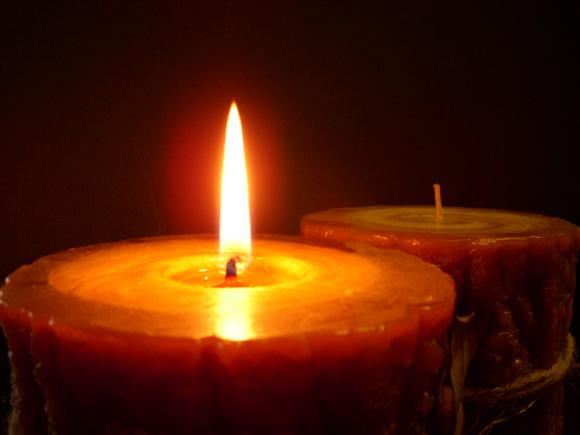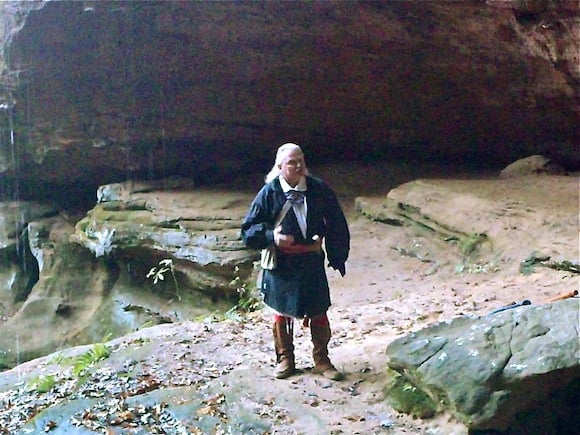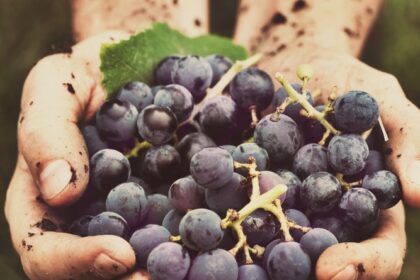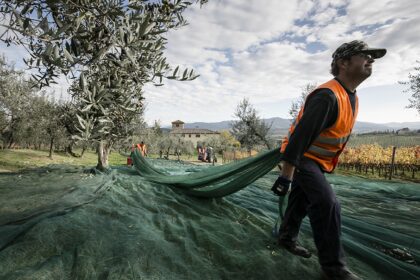Before visiting Hocking Hills, Ohio, I wasn’t quite sure what to expect. While I’d heard the state was flat with not much to do, I also heard there were some quirky and adventurous activities to be experienced. After visiting for myself, the latter view won by a landslide.
One that really piqued my interest was a hike with Hocking Hills Adventure Trek that started with an informative forest and cave hike, and ended in a session of storytelling led by Wehyehpihehrsehnhwah, a native Shawnee Indian. While I knew the journey would be interesting, I didn’t realize what a live-changing affect it would have on me.
[pullquote]At first Wehyehpihehrsehnhwah speaks his native language until he realizes we don’t understand him.[/pullquote]
It’s odd that with 100 miles of hiking trails, not many people know about Saltpetre Caves Nature Preserve. That’s one of the reasons company owner Jim Stratton and naturalist guide Joe Brehm love to lead their tours here. We walk through Hemlock, White Oak, Greenbrier, mushrooms and the fun-to-say, Sassafras, which is known for its medicinal purposes as well as being an additive to beer. We shimmy through slots and caves, walk by lichen-covered trees and honeycombed sandstone, learning about local flora and fauna until we see a man dressed in a traditional pullover linen shirt with deer hyde leggings and a finger-weaved belt. At first Wehyehpihehrsehnhwah speaks his native language until he realizes we don’t understand him.
“I mean no harm,” he says. “Come in.”
[pullquote]The three sisters may be very different, but by working together they thrive.[/pullquote]
We approach the cave dwelling and sit around the Shawnee man awaiting his stories. He begins talking about the times before highways and electricity. When the people of the Shawnee were related by their unity of their village, and everyone worked together to survive. He told us of Tecumseh, a famous Shawnee Indian, how the village didn’t have a class system and the importance of the “three sisters,” corn, beans and squash. You see, these vegetables are more than just food, they’re teachers. When the corn grows, it provides a stalk for the beans to wind up. In return, the bean plants stabilize the corn, as well as add healthy nitrogen to the soil. Additionally, the squash at the bottom of the stalk produce a giant leaf that acts as shade for the plant’s roots. On the leaf, you’ll also find a sharp pricker, perfect for protecting the “siblings” from hungry raccoons. The three sisters may be very different, but by working together they thrive.
“A long time ago, The Creator made everything,” explained Wehyehpihehrsehnhwah. “All the creatures could communicate because they were one.”

[pullquote]Suddenly, The Creator came down to intervene. He noticed a spider who had finished spinning its web, a tangible metaphor for the web of life.[/pullquote]
So, while people could talk to other people, they could also communicate with animals and plants. One day, the three groups got into a heated discussion about who was the best. Because men could build and invent, they believed they were the greatest creation ever to be made. However, the animals disagreed, as without them the humans would have no food. The plants had something to say about this, as without them both the animals and humans would starve and wouldn’t be able to build shelter. Suddenly, The Creator came down to intervene. He noticed a spider who had finished spinning its web, a tangible metaphor for the web of life.
“He was The Creator of the web, so he could do what he wanted with it,” said Wehyehpihehrsehnhwah. “But, the plants, animals and men could not.”
In the web of life, the smallest strand is just as vital as the biggest strand. Without the tiniest strand, the entire system would fall apart.
“Man, you may be the biggest but what you do can destroy the web,” said The Creator. Wehyehpihehrsehnhwah then gets solemn. “My question is, have we learned?”
It would appear not. We build walls of concrete, forgetting how to dance in the circle of life. We’re reminded constantly of how precious life is, but quickly forget with the next text message or Jersey Shore rerun.

Wehyehpihehrsehnhwah then tells a story of killing a deer. When we take a life, we need to realize how precious it is. The Shawnee make sure to use the entire animal. While Wehyehpihehrsehnhwah shares the meat for food with other Shawnee, his wife will sew a pair of leather gloves. They make candles and clothing, and when they use these products they remember the deer fondly. Every life is precious, no matter how small “a strand” it is.
He seems to be envisioning the deer as he speaks. “Brother, I may take your life. But, I do not take it lightly.”
“When I die, they will place an acorn on my grave. From it, a tree will grow and your family will eat the acorns from the tree.”
It’s the web of life.
[pullquote] Slow down, appreciate, disconnect and never take for granted what the natural world can provide.[/pullquote]
When the storytelling ends, Wehyehpihehrsehnhwah plays the traditional Indian flute. The beautiful song pushes me deeper in thought as to what is important in life. How many times do we regard others as less important? Or take for granted the natural beauty around us? As I stand there holding my iPhone – almost a habit these days – I felt like a criminal. I quietly slid the device into my backpack and zip it up.
While it may be too late to completely get rid of the concrete and computers and revert back to the days of hunting and gathering, there are still ways to incorporate the messages of these stories into today’s fast-faced life. Slow down, appreciate, disconnect and never take for granted what the natural world can provide.
Jessica Festa
Latest posts by Jessica Festa (see all)
- A Culturally-Immersive Adventure In Mongolia’s Altai Mountains - Jul 8, 2023
- This Recipe Sharing Platform Supports Women In The Culinary Industry (Labneh Recipe Included!) - Nov 5, 2020
- Hiking The Mohare Danda Community Eco-Trek In Nepal - Jun 3, 2020
- 6 Important Questions For Choosing A Responsible Yoga Retreat - May 18, 2020
- How To Create & Grow A Profitable Blogging Business (Ethically) - Jan 18, 2020






